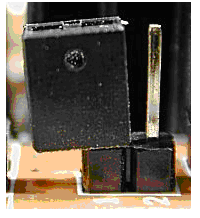In this basic motherboard troubleshooting tutorial, you will learn about system board configurations, ROM BIOS troubleshooting, basic hardware components, physical memory and basic configuration errors and system memory basics. This motherboard configuration and microprocessor troubleshooting tutorial help you identify the basic system board problems. There are many replacable components on a mother or system board such as RAM, ROM, CMOS battery and ROM BIOS. If any of these components functions improperly, you can replace the faulty components with the new components. The Microprocessor and the ROM BIOS are the two major components that are responsible for the problems that are generated for the system board. While proceeding with the troubleshooting, you should from the Microprocessor and the ROM BIOS. There are a large number of the hardware failure symptoms that are associated with the system board. Typical symptoms associated with system board failure are the following.
1. The system locks up during working
2. The system produces a one long beep and 3 short beeps.
3. Current time and time disappear or changed.
4. DMA error message occurs
5. Low CMOS battery message appears.
6. CMOS checksum failure message appears
7. A 201 error message appears which indicates the RAM failure.
8. A Parity check message appears which also indicates the RAM error.
9. The On/Off indicator lights of the system are working, hard drive is also spinning up but there is no boot up starts.
10. The On/Off lights are working and there is also a display on the monitor but the hard disk doesn’t starts up and no system boot ups occur.
Configuration Problems
The configuration problems are most likely to occur when the system starts up for the first time or there is some new installation has been performed on the system. The values and configurations that are stored in the CMOS but accurately reflect the configurations. Incorrectly CMOS values results in the associated hardware to fail. In the advanced CMOS settings, check the enabling functions as a part of the hardware configurations. There are many configuration options in the modern BIOS and a user must have the knowledge of how to configure them. If you can see the startup screen on which BIOS information is displayed, you can consider that there is not basic hardware configuration problems exists in the basic hardware components. After this point, the system starts to load the device drivers and other additional components information and next to this point, the system loads the operating system. If the error occurs after the CMOS display and before the boot up tone, you must clean boot the system.
Microprocessors Troubleshooting
If the Microprocessor fails to work, you must hear a slow beep sound or no display occurs at the monitor screen. This tells that some internal hardware or configuration errors have stopped the microprocessor’s internal circuitry to work. Some kinds of internal problems allow microprocessor to work but in case of extra working, microprocessor fails to perform additional work. The best solution for the microprocessor’s problems is to replace it with a new one. If the system locks up for a continuous few minutes, this means that the fan of the microprocessor or the internal cooling mechanism is not working properly. In this scenario, you should replace the fan of the microprocessor to provide it continuous cooling.
RAM Errors
RAM is a serviceable part of the system board and the RAM failure basically can be categorized into the following two categories. Soft-memory errors: Soft memory errors are the errors that are caused by the infrequent glitches in the operation of the system. These errors can be controlled just by restarting the system. Hard-memory errors: Hard memory errors are the permanent physical errors and that requires that memory units should be checked properly and replaced.
ROM BIOS Setup Erros
A malfunctioning or damaged ROM stops the systems’ working completely. If the system board is dead, you should first examine the BIOS chip for any kind of physical damage. If the BIOS chip is heated up, it is most likely for it to crack. Another symptom that points towards the damaged RAM is bootup sequence automatically moves into the CMOS configuration display. In this situation, you must replace the faulty BIOS chip with another one, which matches according to your system’s configurations. Another cause of the system’s failure or problem is the malfunctioning of the CMOS battery. If the system fails to display the current time and date, the most likely reason for this is the faulty CMOS battery and the only solution for this is to replace the battery with the new one. In case the battery is replaced, the configurations and settings in the CMOS chip are lost, the only method for the configuration is to access the CMOS batter and reconfigure the system.


